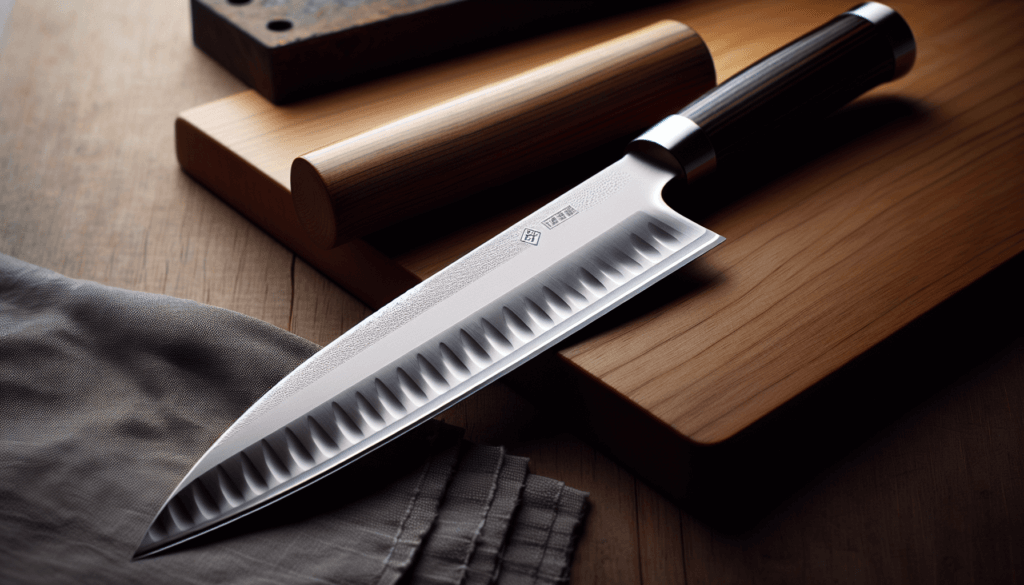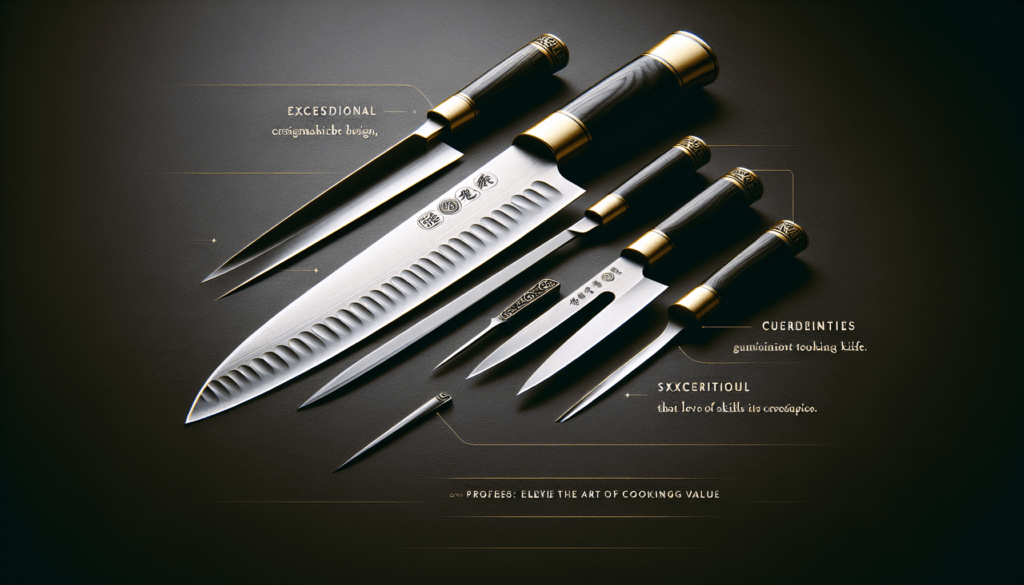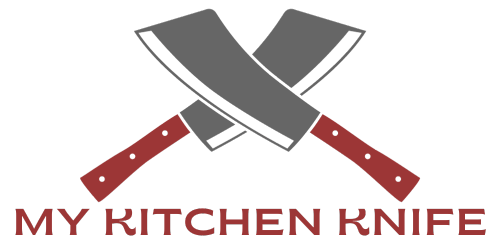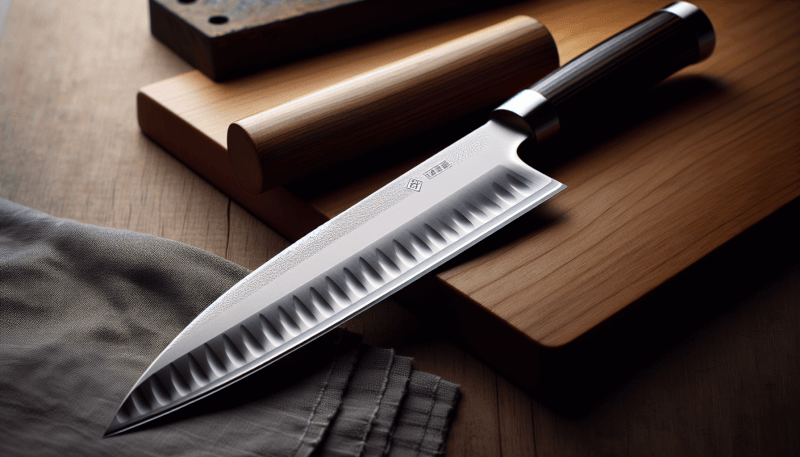If you’ve ever wondered why professional chefs always seem to wield Japanese kitchen knives with such finesse, look no further. The secret behind their blade-wielding mastery lies in the unparalleled craftsmanship and superior quality of Japanese knife-making. Renowned for their razor-sharp edges, remarkable durability, and sleek designs, Japanese knives have become the go-to choice for chefs around the world. In this article, we’ll take a closer look at what sets these exceptional knives apart, and uncover the reasons why professional chefs swear by their unparalleled performance in the culinary world.

History of Japanese Kitchen Knives
Origins of Japanese Kitchen Knives
The history of Japanese kitchen knives dates back to ancient times. The art of knife making in Japan can be traced back to the samurai era, where the swords forged for battle also influenced the craftsmanship of kitchen knives. Japanese knife making techniques were further developed during the Edo period, with the establishment of knife-making centers in Sakai and Seki. These centers became renowned for their exceptional quality and precision, setting the foundation for the modern Japanese kitchen knife industry.
Traditional Japanese Knife Making Techniques
The art of Japanese knife making is steeped in tradition and craftsmanship. One of the most important traditional techniques is the forging process, where multiple layers of steel are carefully heated, hammered, and folded to create a strong and resilient blade. This folding process not only helps to remove impurities from the steel but also enhances the knife’s strength and durability. The blade is then meticulously shaped, ground, and sharpened by skilled craftsmen to achieve the desired edge. This age-old technique has been passed down through generations, ensuring that Japanese kitchen knives continue to embody a rich heritage of fine craftsmanship.
Exceptional Sharpness and Precision
Hardness of Japanese Steel
One of the defining characteristics of Japanese kitchen knives is the exceptional hardness of the steel used in their construction. Japanese steel typically has a higher carbon content than other types of steel, which contributes to its superior hardness. This hardness allows the blade to achieve and maintain an incredibly sharp edge, making Japanese knives ideal for tasks that require precision and fine cutting. The hardness of the steel also ensures that the blade is less prone to rolling or dulling, resulting in knives that retain their sharpness for extended periods of use.
Honbazuke Method of Shaping the Blade
To achieve the extraordinary sharpness and precision exhibited by Japanese kitchen knives, craftsmen utilize a technique called honbazuke. This method involves the meticulous process of sharpening and polishing the blade to an extremely thin and precise edge. Through a combination of grinding, polishing, and honing, the craftsmen refine the blade to ensure its razor-like sharpness. The honbazuke technique is a testament to the dedication and skill of Japanese knife makers, resulting in knives that deliver unparalleled cutting performance and precision in the kitchen.

Versatility in the Kitchen
Various Types of Japanese Knives
Japanese kitchen knives come in a vast array of shapes and designs, each with its own specific purpose. From the versatile and multi-purpose santoku knife to the specialized deba knife for filleting fish, there is a Japanese knife for every culinary task. The elegant and slender yanagiba knife is prized for its ability to slice sashimi with effortless precision, while the nakiri knife excels at chopping and dicing vegetables. The diversity of Japanese knife styles allows chefs to choose the perfect tool for each ingredient, ensuring optimal performance and efficiency in the kitchen.
Adaptability to Different Cooking Techniques
Japanese kitchen knives are renowned for their adaptability to various cooking techniques. The lightweight and agile nature of these knives makes them well-suited for intricate tasks that require finesse and delicate handling. Whether you are thinly slicing a delicate piece of sashimi or meticulously cutting paper-thin vegetable ribbons, a Japanese knife provides the control and precision needed to execute these techniques flawlessly. Additionally, the thin and sharp blade of a Japanese knife reduces the likelihood of crushing or tearing ingredients, allowing for clean and precise cuts that enhance the presentation and flavor of your culinary creations.
Lightweight and Well-Balanced
Ergonomic Design
Japanese kitchen knives are not only highly functional but also ergonomic in design. The lightweight construction of these knives reduces the strain and fatigue on your hand and wrist, allowing for prolonged use without discomfort. The balanced weight distribution of Japanese knives further enhances their ease of use, providing optimal control and maneuverability. Whether you are a professional chef or a home cook, the ergonomic design of Japanese knives ensures a comfortable and enjoyable cooking experience.
Reduced Fatigue during Prolonged Use
The combination of lightweight construction and well-balanced design in Japanese kitchen knives leads to reduced fatigue during prolonged use. The agile and nimble nature of these knives allows for effortless movement and precise cutting, minimizing the effort required to perform various kitchen tasks. With Japanese knives, you can spend hours in the kitchen without experiencing the strain and exhaustion often associated with heavy and cumbersome knives. This makes Japanese knives an excellent choice for professional chefs and culinary enthusiasts who value both performance and comfort.

Unparalleled Edge Retention
Advanced Heat Treatment Process
Japanese kitchen knives undergo an advanced heat treatment process that further enhances their sharpness and edge retention. Through precise temperature control and cooling techniques, the blade is hardened to achieve the optimal balance between hardness and durability. This meticulous process ensures that the blade retains its sharpness for a significantly longer period compared to knives made using conventional methods. The exceptional edge retention of Japanese knives translates to less frequent sharpening, allowing you to focus on your culinary creations without the interruption of blade maintenance.
High Carbon Content in the Steel
The high carbon content in Japanese steel contributes to not only the hardness but also the edge retention of the blade. Carbon steel has the ability to form incredibly strong carbides, which play a crucial role in maintaining the sharpness of the edge. These carbides are resistant to wear and deformation, ensuring that the blade retains its cutting performance even after extended use. The high carbon content of Japanese steel is a testament to its quality and durability, making Japanese knives a valuable investment for any serious chef or cooking enthusiast.
Unique and Beautiful Aesthetics
Intricate Damascus Patterns
Japanese kitchen knives are not only renowned for their performance but also their exquisite aesthetics. A hallmark of Japanese knife craftsmanship is the intricate Damascus patterns adorning the blades. These patterns are created through a process called layering, where multiple layers of steel are stacked and forged together. The resulting pattern is a captivating mosaic of contrasts and textures, elevating the knife from a mere tool to a work of art. Each Damascus pattern is unique, reflecting the skill and creativity of the craftsmen who meticulously create these stunning blades.
Exquisite Handle Materials
In addition to the captivating blades, Japanese kitchen knives also feature handles crafted from a variety of exquisite materials. From the warmth and beauty of natural wood to the durability and resilience of synthetic materials, there is a handle option to suit every preference. Japanese craftsmen pay careful attention to every detail, ensuring that the handles are perfectly balanced and comfortable to hold. The combination of the stunning blade and the meticulously crafted handle creates a knife that not only performs exceptionally but also adds a touch of elegance to your kitchen.

Great for Precision Cutting
Thin and Sharp Blade Edge
Precision cutting is a fundamental skill in the culinary world, and Japanese kitchen knives excel in this area. The thin and sharp blade edge of Japanese knives allows for precise and controlled cuts, ensuring that each slice is made with accuracy and finesse. This exceptional sharpness enables chefs to achieve consistent thickness and uniformity, enhancing the visual appeal and taste of their dishes. From paper-thin slices of fish to intricate vegetable garnishes, Japanese knives give you the ability to execute precision cutting techniques with ease and confidence.
Perfect for Delicate Ingredients
Delicate ingredients require careful handling to preserve their texture and flavor, and Japanese kitchen knives are perfectly suited for this task. The thin and sharp blade allows for clean and precise cuts without crushing or tearing delicate ingredients such as herbs or thinly sliced meats. The exceptional control offered by Japanese knives ensures that you have the dexterity to handle even the most delicate of ingredients with ease, resulting in culinary creations that are both visually appealing and delicious.
Ease of Sharpening
Traditional Whetstone Techniques
Despite their exceptional sharpness and edge retention, Japanese kitchen knives are surprisingly easy to sharpen. Traditional whetstone techniques have been passed down through generations, enabling chefs to maintain the performance of their knives with relative ease. With the proper guidance and practice, sharpening a Japanese knife becomes an enjoyable and meditative process. The act of sharpening not only restores the keenness of the blade but also fosters a connection with the craftsmanship and tradition that goes into creating these remarkable knives.
Low Angle of the Blade
The low angle at which the blade is sharpened also contributes to the ease of sharpening Japanese kitchen knives. The narrower cutting edge requires less material to be removed during the sharpening process, making it quicker and more efficient. This low sharpening angle not only facilitates the restoration of the blade’s sharpness but also enhances its cutting performance. With minimal effort and time invested in sharpening, you can maintain the exceptional sharpness and precision of your Japanese knives, ensuring that they remain a reliable tool in your kitchen for years to come.

Availability of Customization Options
Handcrafted and Personalized
Japanese kitchen knives offer a level of customization that allows chefs to have a tool tailored to their specific needs and preferences. Many Japanese knife makers offer handcrafted knives that can be personalized with unique engravings or custom handle materials. This level of customization ensures that the knife is not only a functional tool but also a reflection of the chef’s individual style and personality. By owning a customized Japanese knife, chefs can forge a personal connection with their most trusted culinary companion.
Customizable Blade Shapes and Materials
The availability of various blade shapes and materials further adds to the customization options of Japanese kitchen knives. Chefs can choose the blade shape that best suits their preferred cutting techniques, allowing them to maximize their efficiency and performance in the kitchen. From the long and slender yanagiba to the versatile and all-purpose gyuto, each blade shape offers a unique set of benefits. Additionally, chefs can select from a range of materials for the blade, such as different types of steel or even ceramic, to further customize the knife to their specific requirements.
Longevity and Durability
High-Quality Materials and Craftsmanship
Japanese kitchen knives are renowned for their exceptional quality and durability. The use of high-quality materials, such as the premium steel used in their construction, ensures that these knives can withstand the rigors of daily use without compromising their performance. The meticulous craftsmanship employed in the creation of Japanese knives guarantees that each knife is made to the highest standards. Whether you are a professional chef working in a bustling kitchen or a home cook preparing meals for your family, Japanese knives are built to last and provide reliable performance for years to come.
Resistance to Corrosion and Wear
The materials and techniques used in the production of Japanese kitchen knives also contribute to their resistance to corrosion and wear. The high carbon content in Japanese steel enhances its resistance to rust and other forms of corrosion, ensuring that the blades remain in optimal condition even in humid or challenging environments. Additionally, the hardness of the steel and the meticulous edge treatment processes make Japanese knives highly resistant to wear and deformation, prolonging the lifespan of the blade and maintaining its exceptional performance over time.
In conclusion, the history of Japanese kitchen knives is rich and steeped in tradition. From their origins in the samurai era to the present day, Japanese knives have evolved into tools renowned for their exceptional sharpness, precision, versatility, and aesthetic beauty. The use of high-quality materials, traditional craftsmanship techniques, and customization options ensure that each Japanese knife is a unique and invaluable tool in the kitchen. Whether you are a professional chef or a passionate home cook, investing in a Japanese kitchen knife will elevate your culinary experience and enable you to achieve new heights of precision and mastery in the art of cooking.


